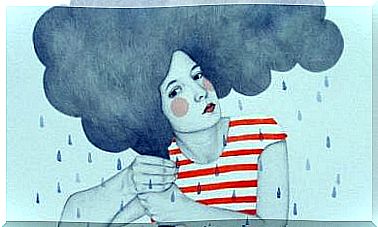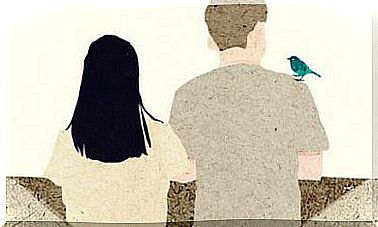Find An Explanation: Natural Anxiolytic

In a world driven by rational logic, finding an explanation for everything is almost mandatory. The language chosen for basic communication responds to the category of indicative language , proper to description, interpretation and explanations.
It is the language of linear causality, for which reasoning consists in the search for origins (cause-effect). In dialogue it often happens to activate that automatism dedicated to the search for the cause, the main reason and an explanation.
This tendency to find an explanation, the motivations behind an event in verbal language translates into the search for “why?” . Well, why do we do it and what do we need it for?
The search for why, for an explanation, for awareness and then for calm
The human being is concerned with answering the questions of life in an attempt to clarify. He can’t stand the doubt, the “non-answer”, something that would imply the absence of control over events, people and things.
The explanatory principle was the principle of the classical sciences, which conceived a purely deterministic universe. A universe in which certainty and truth invoked an order capable of keeping the world as a whole in balance.
Edgard Morin states that according to the perspective of the classical sciences, the principle of explanation meant contradiction as a cognitive error.
This principle has not only been applied to scientific research, but has also managed to establish itself as a sociocultural cognitive style, as a way of processing knowledge.
The post-modern era, on the other hand, recognizes and faces contradictions and conceives the existence of different points of view on the same topic.

The logic of the causal-linear why
The causal-linear logic of why is part of the usual interaction between human beings, to a greater or lesser extent depending on the culture they belong to.
Certainly asking and answering with a why is a way to find an explanation and to understand everything, from the most insignificant situations to the most complex to solve.
For example, if our stomach hurts, let’s immediately think about what we ate, what could have hurt us.
If a friend of ours behaves in a worrying way, we wonder what is the cause that has led him to so much. We instinctively think about the why of things.
In therapy, patients often ask themselves questions such as: “But … why did this happen to me?”, “Why me?”, “What am I doing?” or “Why do I do this?”. Why, why and why, as if finding the cause were the formula for resolving the conflict.
The exercise of why begins in childhood. As children, our questions about the why of things push our parents to answer in a simple and linear way with the cause and effect mechanism .
Question after question, our parents more or less patiently answer our “And why?” and they satisfy our doubts with linear and certain answers.
“Why” is one of the most used words in everyday life. A powerful term that represents a bridge to obtain information based on certain answers.
A concept that opens the doors to new knowledge, which allows us to reflect, think and go deeper into situations, between the people involved, in our past.
Find an explanation, cause and effect
Causal explanations can point to a variety of reasons:
- They could obey the relational context (an interactional why). For example: “ I reacted like this because the other person yelled at me”.
- Often we do not continue with the classic: “the other person reacted like this because I told her not to bother me”. Consequently, only one version of the relational circuit is heard.
Other explanations
The most common are translated into the search for causes in the past, in childhood or adolescence, by means of a savage psychoanalysis.
According to this line of thinking, sometimes the emphasis lies not in circularity or linearity , but in the need to find a reason for things inherent in the structure or functioning of the human mind.
Faced with the disorder and entropy of experience, the human being tries to find a semblance of order that can make things work.
Here are established social, religious, cultural, family rules to correct and rectify errors in the learning phase.
For its part, verbal language regulates communication – in its isomorphic meaning – by its own codification and, to a certain extent, it regulates interaction by means of speech syntax and semantic articulations.
Explanatory Rivotril: Is Finding an Explanation the Antidote for Anxiety?
Faced with an event that causes uncertainty and consequent anguish, the tendency to want to go back to its origins produces momentary and lasting sedative effects. Therefore, the desire to find a why has the same function as an explanatory Rivotril .
The acquisition of new information, like a linguistic construct that generates understanding of the event, pushes the person to feel a certain security, which offers stability within the system in which he is immersed.
In summary, the system in which a person is immersed remains stable. However, in the face of the irruption of an event or a critical event (such as a bereavement, a transfer, a dismissal, etc.) the breaking of the balance (crisis) comes into play and the question spontaneously arises: “ why is success?”.
Thus, explaining the facts makes it possible, through understanding and action, to restore a certain confidence as the first step in acquiring a new equilibrium.

Some explanations and their effects
Some explanations are used to quickly get out of a moment of tension, but they do not change the situation. They are those in which the information provided by the why turns out to be superficial.
Their purpose is to temporarily maintain the balance prior to the appearance of a problem. In other words, they are palliative and do not lead to downsizing the extent of the problem.
For example, rationalization and intellectualization are defense mechanisms that can be considered explanations of this kind, as long as the person endorses with justifications as to why what happens, such as conflicting attitudes or somatic traits.
These explanations are anxiolytic, they resolve the anxiety momentarily and explain the phenomenon with the category in which it falls. Keep in mind that we classify all objects in the world into categories.
Faced with the appearance of a problem, it is an attempt to give an explanation to the category in which a given object resides. For example: “he is a bad student because he is rough” or “he drinks a lot because he is an alcoholic”.
Well, anxiolytic explanations are not rare either, according to which the person wonders the reason for a certain state of mind – such as sadness or anguish – for no apparent and indistinct reason, and the need to go back to the origins immediately arises. of the same.
In general this can lead to find the answer in an external element, silly or superficial: “I feel sad because it rains .. because the day is gray” (attributing the meaning of sadness to rain).
In addition, people who are affectionately close are often involved (friends, family, etc.), whose reactions are considered a cause for concern or disturbance: “It happens to me because you make me nervous”.
Find an explanation, act and grow
The anxiolytic explanation, or explanatory Rivotril, is often used, but it is also confused with another type of explanation that modifies actions and stimulates growth.
It seems that when we categorize what happens to us we feel calmer, although this does not imply a change in actions.
Or rather, we give a name to what happens to us, which saves us from having to navigate the sea of uncertainty that gives rise to the fact of not knowing.
But the certainty of the explanation assures us of a change in interactions. The question stops when nothing is done to change.
It would be interesting to hypothesize how the mechanism continues starting from the moment in which the causes are known, or how I can carry out a new action specifically and solve the problem.
Explanatory rivotrils are pseudomotive that do not add content or cause a change of mentality. The real explanations consist in re-categorizing, that is, in placing what happens to me in other categories in order to be able to reformulate it.
These are restructuring explanations that promote change, those that wisely produce a change of category and that, therefore, induce new actions.
Meanwhile, anxiolytic responses seem to help us survive in a way that fills us with uncertainty.









